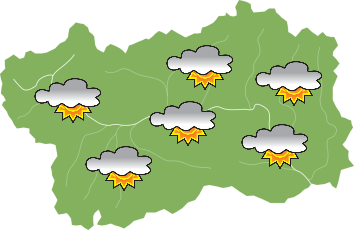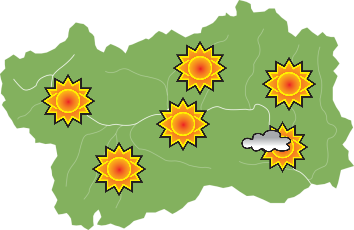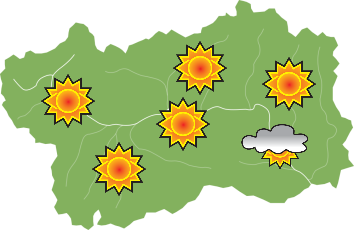The wide terrace on which the village of Erésaz stands offers a very pleasant and peaceful landscape which echoes a rural environment from another era. Walking around the village, we feel ourselves embraced by a sense of mystery that has always stimulated the imagination and curiosity of its inhabitants, who found themselves up against a cave from which a current of icy air flows out, a lake that is there yet not there, a rocky gendarme that watches over the valley and immense stone quarries positioned between stupendous forests. The area is clearly dry and barren, but the strangeness of the site has led people to believe that a fossil glacier buried by a large landslide is hidden underground and that in a certain sense it interferes with the environment above.
Near the inhabited area of Emarèse there are several geomorphological particularities that are apparently quite different from each other, but in fact they are the manifestation of the same phenomenon.
After approximately a half hour walk from the centre of Erésaz, we reach the “Borna da ghiasa”, that is, “the ice hole”, referred to by this name due to the icy temperatures present there throughout the year, up to a short time ago the ravine was an excellent ice-box, which was useful for the conservation of food during the summer season.
A little eastwards with respect to Erésaz, you will notice a large depression in the land, Lake Lot, in reality it only fills up sporadically and for this reason, it is called by the inhabitants of the area “Lago Fantasma” (Ghost Lake).
Further east, proceeding along the trail that leads to Challant, having crossed the debris-covered slopes, you will reach Bec de l’Uja, a sort of rocky pinnacle, the shape of which recalls the beak of an eagle, from which its name originates.
These and other elements certainly find no explanation in the existence of an underground glacier, but rather, they are the more or less direct expression of a gravitative movement of the entire slope, which tends to slide slowly downwards, causing fractures in the rock, breaking up large portions of the slope and giving rise to decidedly unique geological elements. This phenomenon goes by the name DGPV, that is Deep-Seated Gravitational Slope Deformation.
How to get there
Exit the A5 motorway at Châtillon and proceed along the S.S. 26 in the direction of St. Vincent, then follow the signposts for Col du Joux. After approximately 20 minutes, you will reach the inhabited area of Erésaz, in the municipality of Emarèse, and near the Municipality you will easily be able to find parking.










